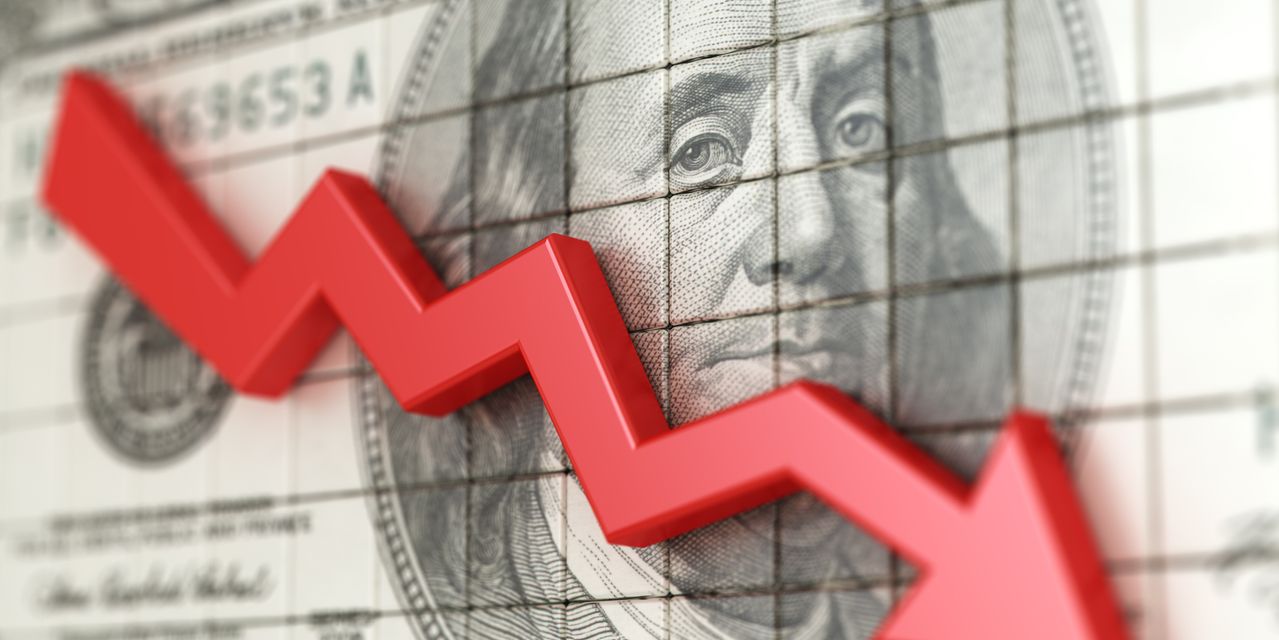Now that the Dow Jones Industrial Average has joined the S&P 500 in bear-market territory, U.S. stocks appear poised for another difficult week.
As a rampaging dollar and sharply higher Treasury yields help to hammer stocks, market technicians are one again looking for signs of an incoming bounce, and some say they may have found them in the Cboe Volatility Index — along with some signs from the options market — that could offer important clues
Helped by the ongoing selloff in stocks, the VIX
VIX,
closed above 30 on Monday for the first time since June 21.
And if the volatility gauge holds above this level, it could send an important signal according to DataTrek Research co-founder Nicholas Colas. In a note to clients on Monday, Colas pointed out that although the VIX hasn’t yet topped 40 — a level that was reached during practically every significant selloff from the past 20 years before an enduring market bottom arrived — investors looking for signs of looming “tradeable” rally may not need to see the VIX print 40 before opening new long positions.
See: Can the stock market bottom without Wall Street’s fear gauge hitting ‘panic’ levels?
Why hasn’t the VIX reached 40 yet?
Why haven’t we seen Wall Street’s fear gauge move higher this year?
To some on Wall Street, the VIX has seemed conspicuously restrained given the level of realized volatility seen in the market this year. The S&P 500 has already seen 47 daily declines of 1% or more since the start of the year. That’s the most in a single year since 2002, according to Dow Jones Market Data. And there’s still three months to go.
That’s well above the 20-year average of 23.6.
And yet, the VIX has only topped out at 36 in June. Why not higher?
It’s difficult to say exactly, but ultimately it may not matter. Because as Colas pointed out, multiple closes above the 30 level have, so far this year, been a more reliable indicator of a looming turnaround. Colas explains more below:
- “The VIX has only closed above 36 (2 standard deviations above its long run mean) once this year. That was on March 7th (36.5 close). It lingered above 30 for the next 5 trading sessions. That was a tradable low: the S&P 500 rallied 11 percent through the end of March.”
- “The next time the VIX spent 5 days above 30 was May 5th – May 12th. The S&P then rallied by 6 percent through June 2nd.”
- “The last cluster of +30 VIX closes this year came around the June 16th lows, and the S&P rallied 17 percent through mid-August.”
If this pattern were to repeat, investors may already be on the cusp of a “tradable” entry point.
But there are other important levels to keep an eye on that are tied to the Wall Street “fear gauge.”
The VIX futures curve, which reflects expectations for how volatile the S&P 500 may become, has become “inverted” as of Friday — a phenomenon that last occurred in June. According to FactSet data, the VIX futures curve is currently inverted through Dec. 21.
The latest market ructions have been a boon for traders of the VIX. Individual investors can gain exposure to the volatility gauge in a number of ways, including buying options or exchange-traded products like the Barclays iPath Series B S&P 500 VIX Short-Term Futures exchange-traded note
VXX.ID,
or the ProShares Ultra VIX Short Term Futures exchange-traded fund
UVXY,
Other indicators of a ‘tradable’ low
Still, the spread between the spot level of the VIX and where VIX futures for delivery on Dec. 21 are trading is only a couple of points.
As Johnathan Krinsky, chief market technician at BTIG, pointed out in a recent note to clients: “We didn’t get a big inversion in June, and while we may not ever get it, history says we haven’t seen a ‘final’ low until we get at least a 10- point inversion.”
Another factor that may have exacerbated the markets latest swing lower is the level of put option buying — which helps investors hedge against further declines — relative to the amount of call buying (calls pay off when stocks rise above a certain level, known as the “strike price”).
According to Renaissance Macro’s Jeff deGraaf, the CBOE U.S. Equity Put-Call ratio reached 1.29 on Friday, near its highest level since June. So far this year, this level as coincided with positive returns for stocks three months later.
See: This stock-market milestone indicates the S&P 500 could be as much as 16% higher one year from today
But as the S&P 500 nears its intraday lows from June, there’s another, lower, level that might be a more reliable indicator that the latest selloff in stocks is nearing a point of exhaustion.
That level is the S&P 500’s 200-day moving average, which is 3,585.
“With the index basically there, and some modest capitulatory signals creeping in, we think a tradable bottom is nearing. The question is from what level. An undercut of the June lows that gets closer to the 200 Week Moving Average (3,585) makes sense to us, especially if we see a wider inversion of the VIX curve,” Krinsky wrote.
Lori Calvasina, head of U.S. equity strategy at RBC, believes the next key level to watch will be 3,500 once the lows form June have been breached.
See: Stock market ‘on cusp’ of important test: Watch this S&P 500 level if 2022 low gives way, says RBC
While it’s tempting to rely on technical indicators that may have worked in the past, both real yields and the dollar are substantially higher than they were even three months ago, Krinsky pointed out.
The ICE U.S. Dollar Index
DXY,
is trading at a 20-year high north of 114. And the 2-year Treasury yield
TMUBMUSD02Y,
on Monday climbed to its highest level since October 2007 as global bonds enter bear-market territory.
See: Global bonds are in first bear market in 76 years based on two centuries of data, says Deutsche Bank
At the very least, Krinsky believes the dollar will need to pause its relentless march higher before stocks can rebound.
The Dow
DJIA,
closed in bear-market territory on Monday for the first time in more than two years, while the S&P 500 fell below its June closing low. The tech-heavy Nasdaq Composite
COMP,
finished down 65 points, or 0.6% at 10,802.92.


